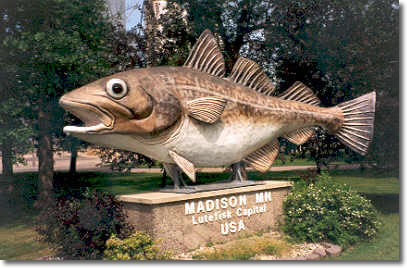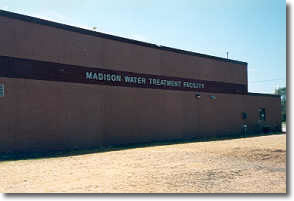Drinking Water Protection
- Drinking Water Protection Home
- About Us
- A-Z Index of Contaminants in Water
- Community Public Water Supply
- Drinking Water Grants and Loans
- Drinking Water Institute
- Drinking Water in Schools and Child Cares
- Drinking Water Revolving Fund
- Laws and Rules
- Noncommunity Public Water Supply
- Source Water Protection
- Water Operator and Certification Training
- Drinking Water Protection Contacts
Related Topics
- Annual Reports
- Drinking Water Risk Communication Toolkit
- Drinking Water Protection External Resources
- Fact Sheets
- Forms
- Invisible Heroes Videos: Minnesota's Drinking Water Providers
- Noncom Notes Newsletter
- Sample Collection Procedures (videos, pictures, written instructions)
- Waterline Newsletter
Related Sites
- 10 States Standards
- Clean Water Fund
- Health Risk Assessment – Guidance Values and Standards for Water
- Minnesota Well Index
- Water and Health
- Wells and Borings
Environmental Health Division
Madison Leads the Way
First Reverse-Osmosis System for Municipal Water Supply in Minnesota
From the Spring 1999 Waterline
Quarterly Newsletter of the Minnesota Department of Health Public Water Supply Unit, Waterline
A complete list of feature stories can be found on the Waterline webpage.

A west-central Minnesota town of 1,900 that is the self-proclaimed “Lutefisk Capital of the World,” the city of Madison has another distinction. It is the site of the first reverse-osmosis treatment used in a municipal water plant in the state.
History
Madison’s first water system, built in 1913, pumped water directly from a well into the distribution system. In response to complaints about hardness, in 1939 the city constructed a lime softening plant that served them for more than half a century. The lime-soda ash treatment process did an adequate job of softening, but it wasn’t removing the high levels of naturally occurring sodium sulfates. Iron and manganese were also a problem. These issues, combined with the realization that the plant was nearing the end of its useful life and concerns about future lime-sludge disposal efforts, made it apparent that a new facility was needed with a number of issues to be considered in determining what type of plant to construct. A primary consideration was the desire to continue to reduce the hardness of the water supply, an amenity the townspeople were accustomed to and would undoubtedly demand again.
Options
Lime softening and two membrane processes—reverse-osmosis, and electrodialysis reversal—were the options Madison looked at. Lime softening was rejected because it would not meet all of the needs, while the high capital cost of electrodialysis reversal caused the city to shy away from it. That left reverse-osmosis as the frontrunner.
In the summer of 1994, a reverse-osmosis treatment process was pilot tested using one of the city’s wells. The membrane was able to achieve an overall recovery rate of 75 percent during the testing period. The following year, Bolton & Menk, Inc. of Mankato, Minnesota, completed a pilot plant study using a bench-scale model of a reverse-osmosis unit. Brian DeWolf of Bolton & Menk said the study indicated success in reducing iron, manganese, sulfate, and total dissolved solids as well as hardness.
The decision was made to construct a reverse-osmosis plant—with a process consisting of aeration, detention, and filtration—along with two new wells, a 300,000-gallon tower, and water mains to connect the new plant to the existing distribution system. The membrane treatment technology was selected in part because of its ability to eliminate the high chemical and labor costs and the lime-sludge problems associated with the existing treatment facility.
Construction began in March of 1997 and was completed by late summer in 1998. DeWolf says the reverse-osmosis process is a 7-4 system, meaning that it has seven first-pass membranes and four second-pass membranes. “Water that doesn’t make it through the membranes on the first pass is subject to the second-pass membranes, which increases the recovery rate,” he explains. “The recovery is about 75 percent, and the city blends about 35 percent filtered-only water with 65 percent reverse-osmosis water, so the overall plant efficiency is just over 80 percent.”
The fact that only four of every five gallons entering the plant ends up going to the consumers is what DeWolf calls, “one of the real drawbacks of a reverse-osmosis system—a high level of rejection.” However, he notes that since the plant went on-line, the water that makes it through the membranes is about 97 percent free of hardness, sulfate, sodium, and arsenic.
 |
 |
|
Madison is the first municipal water supply in Minnesota to use reverse-osmosis.
|
|
Treatment Process
Approximately 380 gallons per minute (gpm) are pumped from the wells. The first stage of treatment is aeration to oxidize the iron and manganese, an economical process that reduces chemical requirements and forms a more filterable precipitate. Occasionally chlorine is added to assist in the oxidation. Potassium permanganate is added to aid in the removal of manganese before the water goes into the detention basin, which is baffled to provide 30 minutes of oxidation. The basin has sludge drawoff piping to aid in cleaning any settled solids from the bottom. The settled solids are discharged into the sanitary sewer or the backwash holding tank. Greensand filtration, which further reduces the manganese level, is the next step in the treatment chain.
DeWolf says pretreatment is a key part of a reverse-osmosis plant. “Removal of iron and manganese is critical to the reverse-osmosis process. Any amount of insoluble particles of iron and manganese can foul the membranes.”
After the greensand filtration, the water enters the first clearwell and is then split with 80 gpm going to the second clearwell, to be used for blending with the finished reverse-osmosis water. The other 300 gpm goes into the reverse-osmosis unit, receiving hydrochloric acid on the way to lower the pH to 6.8. Sodium metabisulfate is sometimes added to remove any chlorine residual. An anti-scalant is also added.
Approximately 210 of the 300 gallons make it through the membranes—either on the first or second pass—with approximately 90 gallons rejected to the storm sewer. The pH of the water that makes it through the membranes is raised to 7.2 with the addition of a caustic. It is then mixed with the filtered-only water in the second clearwell and pumped to the distribution system at 290 gpm as chlorine, fluoride, and a polyphosphate are added.
The plant cost of $1.5 million included both the gravity filtration for the pretreatment and the reverse-osmosis membranes as well as the electrical and control systems and the building itself. DeWolf estimates that, for this particular system, the addition of reverse-osmosis added approximately $300,000. The cost of the total project—including the new tower, wells, and mains—was approximately $2.9 million and was funded by a Rural Utilities Service loan from the U. S. Department of Agriculture of $2.3 and a grant from the Minnesota Department of Trade and Economic Development of $600,000.
Go to > top.